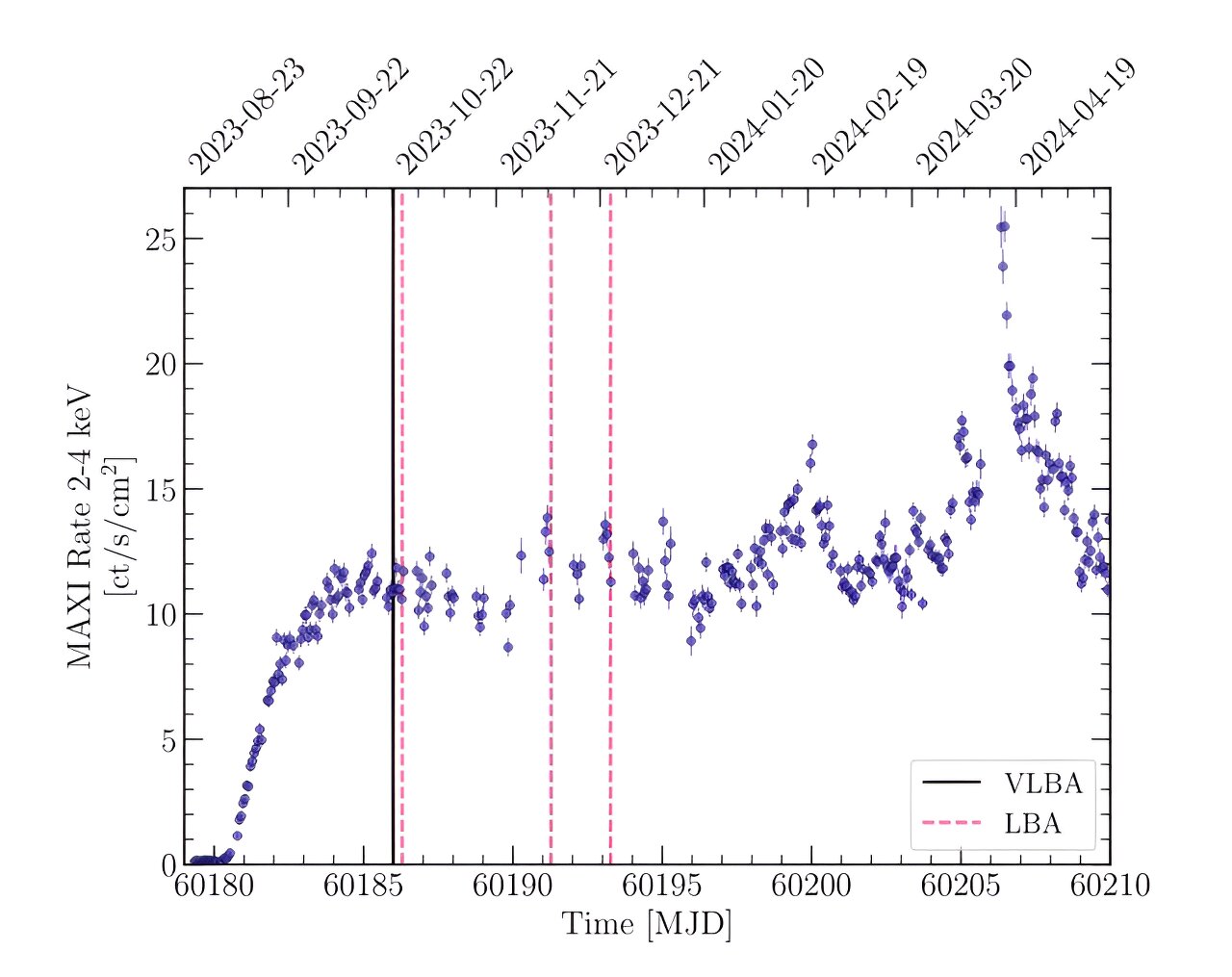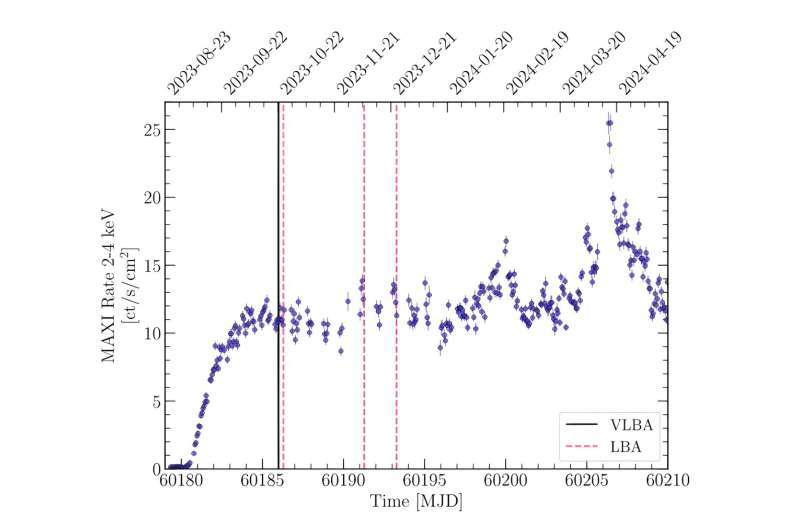

Using the Very Long Baseline Array (VLBA) and the Long Baseline Array (LBA), astronomers have observed a black hole low-mass X-ray binary known as Swift J1727.8-1613. As a result, they found that the system hosts a highly extended and bright relativistic jet. The finding was detailed in a paper published May 20 on the pre-print server arXiv.
X-ray binaries (XRBs) are systems composed of a normal star or a white dwarf transferring mass onto a compact object, which may be either a neutron star or a black hole. XRBs are further divided into low-mass X-ray binaries (LMXBs) and high-mass X-ray binaries (HMXBs), depending on the mass of the accompanying star.
Detected in August 2023, Swift J1727.8-1613 (or J1727 for short) is a black hole low-mass X-ray binary (BH LMXB) at a distance of 8,800 light years. The binary contains an early K-type companion star and the orbital period of the system is approximately 7.6 hours.
Previous observations of J1727 have found that it was in the hard-state at the beginning of a bright outburst. This is typical for BH LMXBs as outburst in such systems begin in a rising hard state, where the radio emission is dominated by a compact, steady, partially self-absorbed, synchrotron-emitting, continuous jet.
These observations suggested that J1727 had a bright, hard-state jet aligned in the north-south direction and now a team of astronomers led by Callan M. Wood of Curtin University in Australia, has investigated the system with VLBA and LBA in order to confirm this.
The new observations of J1727 conducted by Wood’s team during the system’s hard and hard-intermediate states revealed a bright core with a highly resolved, asymmetric jet extending in the north-south direction. The collected images also show a rapidly fading discrete jet knot to the south at a separation of 66.7 mas from the core.
The detected extended continuous structure was measured to be about 40 mas in length. The jet extends 30 and 10 mas from the core, in the south and north directions, respectively. Therefore, the astronomers noted that the jet of J1727, with an estimated extent of 95–160 AU, is the most resolved continuous X-ray binary jet, and could also be the most physically extended continuous X-ray binary jet so far discovered.
“These images reveal the most resolved continuous X-ray binary jet, and possibly the most physically extended continuous X-ray binary jet ever observed,” the scientists concluded.
The researchers also found that the jet of J1727 has an intrinsic speed of β ≥ 0.27, and its inclination is not greater than 74 degrees. When it comes to the identified discrete jet knot, the authors of the paper assume that it may be a result of a downstream internal shock or a jet-interstellar medium interaction.
More information:
Callan M. Wood et al, Swift J1727.8-1613 has the Largest Resolved Continuous Jet Ever Seen in an X-ray Binary, arXiv (2024). DOI: 10.48550/arxiv.2405.12370
Journal information:
arXiv
© 2024 Science X Network
Citation:
X-ray binary Swift J1727.8-1613 has a large relativistic jet, observations show (2024, May 31)
retrieved 31 May 2024
from https://phys.org/news/2024-05-ray-binary-swift-j17278-large.html
This document is subject to copyright. Apart from any fair dealing for the purpose of private study or research, no
part may be reproduced without the written permission. The content is provided for information purposes only.